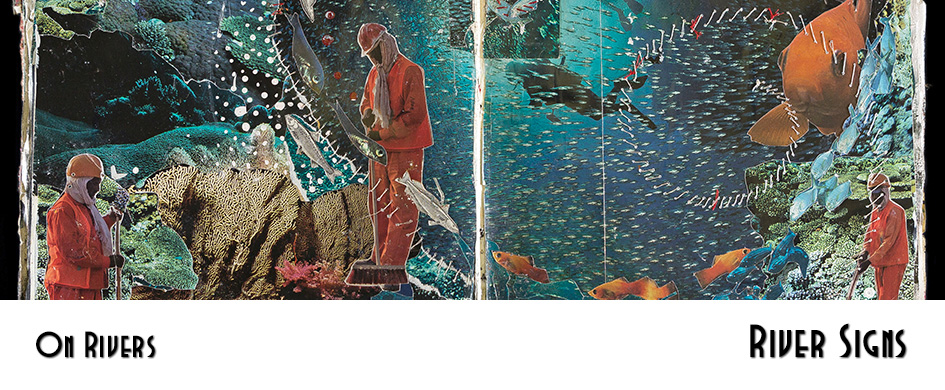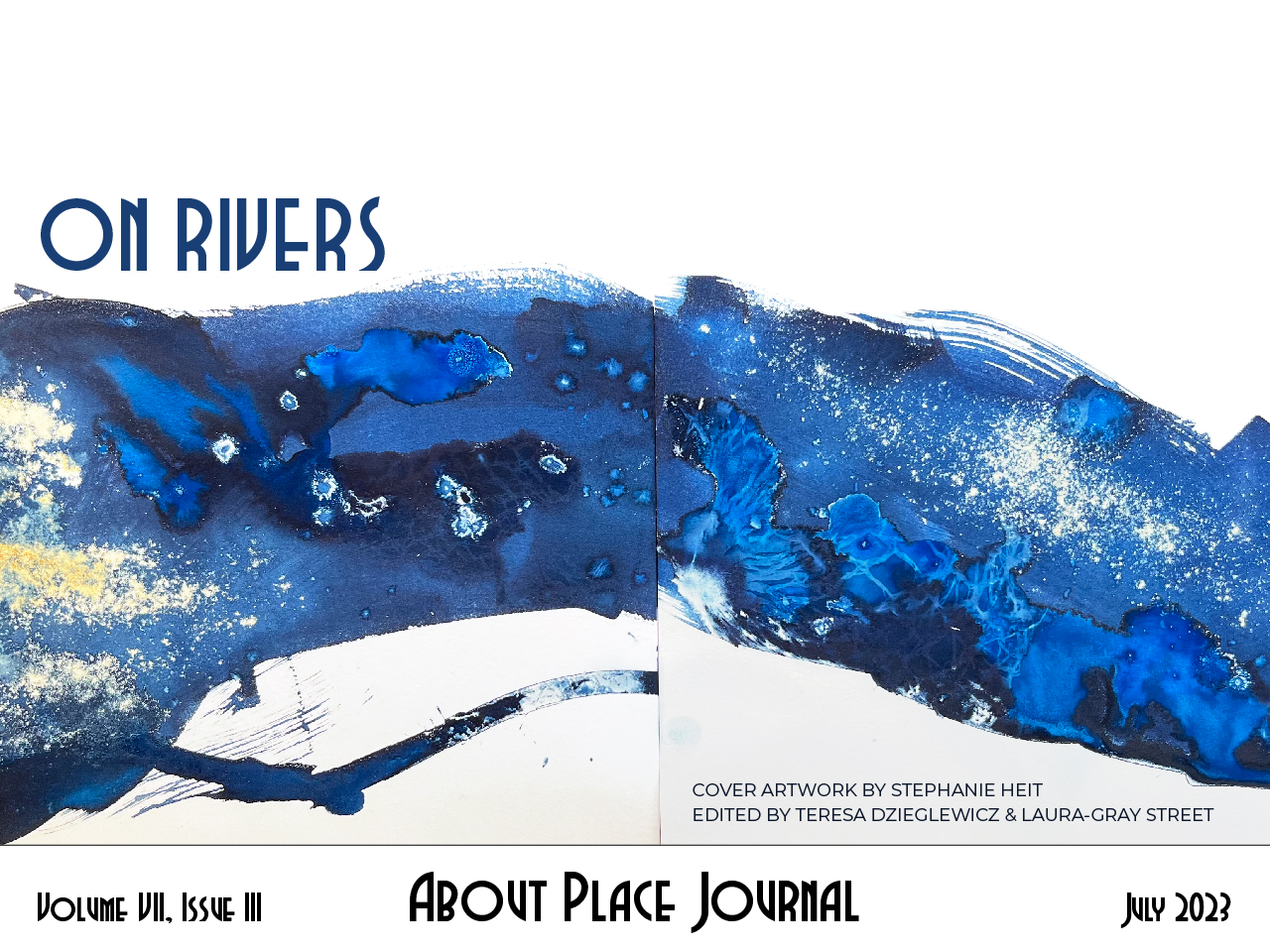Almost every place on the eastern seaboard has a storm that people mention with a shake of the head, like a relative who has broken their mother’s heart. These stories of devastation bear old-fashioned names: Betsy, Irene, Fran, Hazel. In Central Virginia the storm was Camille, which was only a tropical depression in 1969 when it dropped 25 inches of rain in 5 hours on mountainous Nelson County.
“Camille hit in the middle of the night without any warning,” my mother told me as we drove through Nelson County. When I came home from school that day she said we were going to go buy plants at a nursery she liked, but we both knew the errand was about scenery rather than plants. The road wound between steep forested mountains, and I caught intriguing glimpses of old farmhouses above the road, hillside orchards, and narrow river glens.
“No one expected it. You know how big hurricanes hit in Florida or Texas, and by the time they get to Virginia, they’re just a rainy day?” I nodded. “Camille stalled over the mountains. I had never seen anything like it. People say rain comes down in buckets, but it doesn’t really. During Camille it actually did feel like water was being poured out of a giant bucket. Those pretty streams in people’s backyards became torrents and killed people in their beds.”
I stared at the small wood-frame and brick houses, their yards a gentle green slope down to the river. I imagined the yards filling with water, engulfing swingsets, trampolines, old cars, and flowerbeds. I did not yet know what water could do to houses, how it could get in, but the idea scared me.
“And it wasn’t just the rain, it was the landslides,” my mother didn’t go into detail, but most of the people who died in Camille suffered from blunt trauma caused by debris as mountainsides gave way and the water rose everywhere. Two tractor trailers stuck on US 29 were never even found: the flood pulverized them into unrecognizable pieces. To this day when the news reports a hurricane approaching land, I feel a fear of the unknown, a tightening of the stomach. How bad would it get?
***
The first time I bought a house, I was terrified. Mike, my spouse, kept telling me it was going to be OK, that we could maintain a house; we could fix anything that broke. But my sheer ignorance scared me. I hardly knew a boiler from a furnace. I was proud if I could stop a toilet from running by jiggling the handle. The day of inspection was rainy, but it was April and the ground was still frozen in Massachusetts. I watched in horror as water spurted through the cinderblock walls of the basement.
“Don’t worry, there’s a sump pump,” Mike said. A few minutes later I heard the tired rumble of the pump buried in the cement of the basement floor. It was so small. How could the pump remove all the water? During those first few months of homeownership my worries escaped physics. What if the wall of my house fell down? Could the wood stove just break open? What if the sink blew up?
My terrors eased over time. When Mike was away, our neighbor helped me figure out that I had no hot water because the pilot light of the water heater was out. He relit it for me, and I had hot water again. The bedroom skylight leaked in windy rainstorms, but only a little. My mother reassured me over the phone that skylights always leaked slightly. Eventually we had to replace the sump pump, but then we had a working pump. When the water main broke, water bubbled up through the snow (“Mike, doesn’t it seem weird that the snow is melting in one tiny place although it’s 20 degrees out?”), and the city repaired it. I finally believed in my heart that because the roof was sound, the walls of my house would not fall.
But I continued to worry about problems within the realm of physics, in particular hydrodynamics. We lived at 10 feet above sea level, close to a tidal river. I now knew what water could do to houses. And I had the privilege to do something about it.
“Mike, we can’t live here forever,” I told him. “We have to leave before the sea level rises much more.” This was one concern he did not try to talk me out of.
***
My mother lived in the same house for 40 years. Without looking, she stepped around the slick mossy patches on the brick patio every spring. She watched neighbors come and go, marriages flourish and dissolve. She volunteered in the community. She visited older people in the neighborhood and listened to their stories and gossip. My mother taught me how to travel through the land, where not to drive after a summer thunderstorm, and the best way to spot hawks. And through her stories I learned more about Charlottesville. She witnessed fields become university buildings, hills bristle with shopping malls, desegregation, student protests, student apathy, neighborhoods destroyed in the name of urban renewal. She held half a lifetime of history in her memory.
My own ties to place were loose and loosening further. After ten years in the Boston area I grew tired of so many people, a dead-end job, an overbearing neighbor, a thousand paper cuts of frustration and judgment. Mike’s job situation was worsening too, and we decided to move to Vermont. My community grew smaller. I happily quit the job, but I was sorry to leave some wise colleagues. I lost a few friendships. My mother died. The people I once relied on for information and advice were now gone or farther away.
Mike and I moved in during the summer. Every day we walked the perimeter of the yard with Sophie Poodle, marveling at the solitude, the sound of the river, the cows next door and the way they’d walk down the fence line to see what we were doing, the little mountain watching over the yard, the apple trees. Sophie nosed around in the leaves and ferns, smelling the paths of small creatures and barking at cows. We watched the garden and the wildflower fringes of the yard to see what grew. This was gossip I preferred.
If we don’t have someone to tell us the history of land, the gossip of storms, we have to find our own stories. When the leaves began to fall, I glimpsed slivers of stream from the top of the ravine. I expected to see more forest as fall thinned the leaves. But instead I saw a uniform grassy green between our stream and the river. The field was a revelation, as was the ridge formerly hidden by trees that I could see from the kitchen window as I made coffee.
Every year I watch for the ridge, the stream, and the field to appear, a marking of seasons. I thought about how many people had stood at this stove looking out at the ridge that turned ruby and gold with sunrise, which made me miss my mother. I keep track of the changes each fall, such as where the stream shifted because of ice or storms—or one year, beavers. It’s small news, like the way my mother would point out new plantings in people’s gardens as we walked around the neighborhood. I’m lonely, learning from the land, without my mother to help me interpret the past or my old friends to help me learn my way around.
***
When I asked, my neighbor told me that the stream was dredged out of wetlands in the 1800s to power a woolen mill a little ways upstream from my house. Not far above the stone ruins of the mill, wetlands remain: a thick braid of shrubs, mud, and water. She described the process. To make the fields, someone dug trenches to drain the wetland. They would have first grazed with sheep to keep the plants from growing back and to fertilize the land. After that the field was used—and is still used—for haying. Before the fields the river would have moved like my stream, back and forth across the floodplain, nudged off track by storm, beavers, or ice dams. Now it only happens in extreme weather.
Mike and I came to Vermont six years after Tropical Storm Irene devastated much of Vermont. The rain totals seem modest in comparison to Camille, but eight inches of water in twelve hours after a wet spring and summer caused rivers to rise. They flooded the small formerly industrial towns built around waterways. The rivers and streams took out bridges and undercut roads and highways. By the time we arrived, the roads had all been repaired and vegetation had grown back. New gravel was pressed along river bends, but I could see a few steep treeless slips where the land slid into the river. Southeastern Vermont bears some resemblance to Nelson County, Virginia. The same foothills leading up to the same spine of the Appalachians. People get nervous during a hard rain.
Sophie and I walk through the pastures once the cows are in the barn for the winter. Last Christmas, heavy rain caused the river to jump its bank at the bend and flood the bottom pasture. A year later, the flood is still obvious. Sticks and debris remain wrapped around tree trunks. The water flattened the grass all in the direction and distributed sand in furrows. The pasture is a few feet above the river, but one day I turned back toward the river, and noticed for the first time how the river appeared to be flowing directly toward me. The bank was higher, but this part of the field was lower, at river level. Amidst the beauty I feel a tendril of fear. We learn the past in order to anticipate the future.
***
Water is history. It shaped the land, which humans reshaped again. But they didn’t change the land permanently, because the water always comes back. Superstorm Sandy reduced New York City to its pre-colonial coastline. When Tropical Storm Ida came almost ten years later, New York flooded again. Seven inches of rain fell in just a couple of hours, causing old rivers to rise. People drowned in their own apartments in what had, 200 years ago, been a creek bottom. We’ve built impossible cities over meadows, streams, and marshes, but precipitation still falls, and water needs somewhere to go. So it uses human infrastructure. Like us, it travels through subways, sidewalks, buildings, and houses.
Thus far I have stayed out of the way of ghost rivers, the places where water used to flow. Our old farmhouse is a good 200 feet above the floodplain of the river, and I refused to live any closer. But the time scale of climate change is accelerating, and I do not know all the stories and cannot read all the signs. Through warm January weeks and stormy summer nights I sit up with my anxiety of water, the anxiety of history and of the future. There’s no incentive—yet—to build anything in our floodplain or to bury our rivers. Southern Vermont has been losing population for years, although the pandemic provided a slight bump around the ski areas. How fast will it take for climate crises to send significantly more people inland? Will the river someday only be reconstructed by storm?
This year, the river cut closer to one bank than it did the winter before. I’d tell my mother if I could. Where a creek used to run might seem unimportant. Or a half-degree rise in sea surface temperature. The European colonial mindset is that humans are dominant over nature. But the debris in the lower pasture hints at another story. In a time of increasingly intense storms, this small news might save us.


